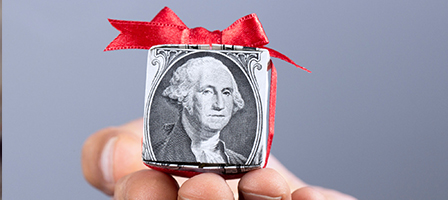Will Gifts Now Using the Temporarily Increased Gift-Estate Exclusion Harm Estates after 2025?
 Article Highlights:
Article Highlights: - Annual Gift Exclusion
- Unified Gift-Estate Exclusion
- Tax Reform’s Temporary Exclusion Increase
- Taxpayer-Friendly Regulations
The Treasury Department has proposed taxpayer-friendly regulations to implement changes made by the tax reform, the 2017 Tax Cuts and Jobs Act (TCJA). As a result, individuals planning to make large gifts between 2018 and 2025 can do so without concern that they will lose the tax benefit of the higher exclusion level for those gifts once the exclusion decreases after 2025.
In general, gift and estate taxes are calculated using a unified rate schedule on taxable transfers of money, property, and other assets. Any tax due is determined after applying a credit based on an applicable exclusion amount.
The applicable exclusion amount is the sum of the basic exclusion amount established in the statute plus other elements (if applicable) described in the proposed regulations. The credit is first used during life to offset gift tax, and any remaining credit is available to reduce or eliminate estate tax.
The TCJA temporarily increased the basic exclusion amount from $5 million to $10 million for tax years 2018 through 2025, with both dollar amounts adjusted for inflation. For 2018, the inflation-adjusted basic exclusion amount is $11.18 million; for 2019, it is $11.4 million. In 2026, the basic exclusion amount will revert to the 2017 level of $5 million, adjusted for inflation.
To address concerns that an estate tax could apply to gifts exempt from gift tax through the increased basic exclusion amount, the proposed regulations provide a special rule that allows the estate to compute its estate tax credit using the higher of the basic exclusion amount applicable to gifts made during life or the basic exclusion amount applicable on the date of death.
If you have any questions related to gifting and estate planning, please give this office a call.
|
|  |





